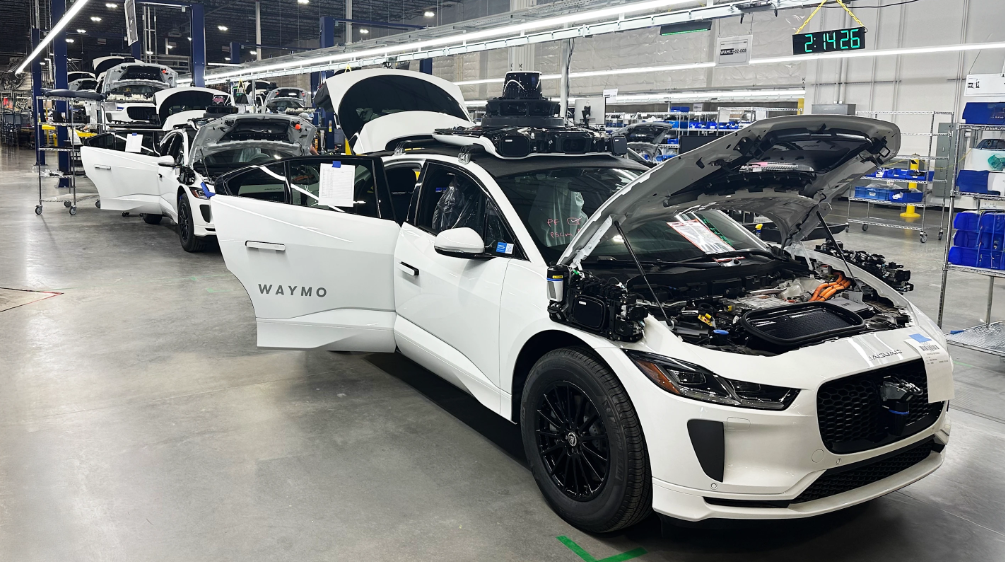On Saturday, an electorate of Space X employees in South Texas voted to create the new town of Starbase and elect fellow employees as its mayor and city commissioners.
That nearly unanimous vote made Elon Musk — in addition to the world’s richest man and the head of the DOGE initiative reshaping the federal government — the employer of the entire government of what amounts to a SpaceX company town.
“Starbase, Texas,” Musk posted on X, “is now a real city!”
It is unlikely to be his last. The establishment of Starbase on the southern tip of Texas as the state’s newest town comes amid the quiet buildout of a colony just outside of Austin — one deeply tied to Musk’s plans for the colonization of Mars.
The community of Snailbrook — which boasts more than a hundred homes, a grocery store and a Montessori school called Ad Astra, Latin for “to the stars” — represents Musk’s move to consolidate his industrial and political power in central Texas.
Snailbrook’s development comes amid repeated fines and complaints by Texas cities and environmental regulators, which have found that Musk’s companies repeatedly dump industrial waste into lakes, rivers and wetlands surrounding his facilities across the state.
It’s also part of a grand vision.
“If successful, this model could be scaled and replicated — influencing future tech hubs globally — a vision for expansion,” all-Musk news channel Muskuniverse reported in November. “The bigger plan for Bastrop is Snailbrook.”
What is Snailbrook?
Just 30 minutes east of Austin, Snailbrook is set to begin a new phase of rapid expansion by year’s end, a report by Dallas-based public radio station KERA found in February.
Musk and associates view the town, which arose from conversations with his former girlfriend Grimes and the singer Kanye West, as “a sort of Texas utopia,” The Wall Street Journal first reported in 2023.
Since then, the new settlement, which sits on unincorporated land in Bastrop County, is near a growing zone of Musk-owned industries.
The settlement sits near the headquarters for Musk’s The Boring Company, which digs tunnels; an expanding SpaceX manufacturing facility that makes the company’s Starlink internet kits and the new headquarters for X.
It’s also about 15 miles east of Tesla’s Gigafactory and the new headquarters of Neuralink, Musk’s brain-to-computer startup.
In Texas, just 200 residents are needed to incorporate, as Starbase did on Saturday. As soon as a deal to link the new settlement to Bastrop’s wastewater line goes through in the next year, Carrillo-Trevino said, it will grow far larger.
“Think about how many acres [Musk] has,” she said. “It’s thousands [of homes] that could fit there.”
Why central Texas?
The region is attractive because of its culture and a lax attitude toward regulation — aspects that are, for Musk, not easily untangled.
He began publicly exploring an exit from California in May 2020, when the city of Fremont closed his Tesla factory due to COVID.
Musk reopened the Fremont factory in defiance of the local government — he was a vocal opponent of Covid restrictions. As the lockdowns began in March 2020, he allegedly bet podcaster Sam Harris $1 million that the pandemic would cause fewer than 35,000 cases in the U.S. By the time Johns Hopkins stopped collecting data in 2023, the total was over 100 million, with 1.1 million deaths.
California had become the land of “overregulation, overlitigation, overtaxation, poop on the sidewalk and scorn,” he told the conservative satirical website The Babylon Bee in December 2021.
By then, he was already investigating a move to Austin, where new “anit-woke’ cultural icons like Joe Rogan, Brian Redban and Tony Hincliffe were moving. The University of Austin, a private school founded by conservatives like Bari Weiss and Ayaan Hiris Ali, was announced in late 2021. Musk in 2023 filed papers to create his own university.
Musk finally announced his departure in July 2024, after Gov. Gavin Newsom (D) signed a California law that prohibited schools from informing parents that their child was gay or transgendered against that child’s will. But the move to Texas, where moves against DEI have become a driving force in the state’s ruling Republican Party, also seems to have been about securing a freer hand for his businesses.
In February 2021, after announcing that the new Gigafactory that would build the Tesla Cybertruck would be in Austin, he told Rogan that Austin would become “biggest boomtown that America has seen in 50 years, at least — megaboom.”
Why found his own town?
In addition to his gripes about California, Musk has long chafed against municipal authority. His complaints about California’s pandemic policy, for example, can also be viewed as a feud with the city of Fremont, which passed the ordinance that closed his factory.
And from the time SpaceX began launching rockets outside Boca Chica, Texas, Musk feuded with the small city’s government over his repeated closures of the public highway to the public beach, to which tens of thousands of visitors came — and poured money into the local economy — every year, as Fox reported.
When he came to Austin in 2020, he asked then-Mayor Steve Adler to promise him that no one would slow Tesla down, the Journal reported. “What he wanted from the city was speed,” Adler, a Democrat, told the Journal in 2023.
Musk associates began buying up land in Bastrop County through shell companies like Gapped Bass as early as 2021 — creating the framework for what would become Snailbrook.
Unincorporated Texas county land — that not under the jurisdiction of an established city — is what one local development expert has called “the wild, wild West.”
“They were in a hurry. They wanted things done yesterday, and if not yesterday then today,” Paul Pape, a former county judge in Bastrop, told NPR.
Why are locals concerned?
In Texas, a light regulatory touch often means air and water pollution.
Tesla’s pace has come at a price, a 2024 investigation by the Journal found. Because Tesla wouldn’t shut down its production line to fix broken parts, the Gigafactory — one of the world’s largest car factories “dumped toxic pollutants into the environment near Austin for months.” That included 500,000 gallons of toxic water per day discharged into the Colorado River, as well as dumping untreated chemical-laden water into the city sewer system — without notifying city officials.
These violations echoed a fight between Musk and Fremont over the 112 air violations Telas’s California factory racked up over five years — cases where Journal reporter Susan Pulliam found the company told regulators “it was going to fix the problems but didn’t over a period of five years.”
“Legacy media is a sewage pipe of lies,” Musk responded on X after the Journal’s reporting was published.
Outside of Austin, however, companies like Musk’s only have to be concerned about state and federal environmental regulators. Texas environmental regulators have found repeated violations of the Clean Water Act by Musk’s companies across the state, and the company has faced repeated fines.
But they have been small in comparison to the size of those companies: $11,876 to the Boring Company for failing to keep untreated wastewater out of local creeks and rivers upstream of the Bastrop water supply; $150,000 for polluting wetlands in South Texas.
Texas environmental regulators in February unaimously permitted Musk to dump 358,000 gallons of wastewater into South Texas wetlands.
What is the long-term plan for Musk’s towns?
Musk’s business enterprises — and his entire political project — are wrapped up in the idea of settling unincorporated areas, specifically Mars.
In March, Musk announced plans for a first uncrewed mission to Mars at the end of 2026, followed by human landings by 2031 — which would rely on equipment built and launched from towns like Starbase and Snailbrook.
He told The Guardian that a “self-sustaining base on Mars” would allow humanity to regenerate after a nuclear war, and Bloomberg that the red planet offers the sole option “if we want to become a multi-planet civilization.”
And if humans “can establish a Mars colony, we can almost certainly colonize the whole Solar System, because we’ll have created a strong economic forcing function for the improvement of space travel,” he told the science magazine Aeon.
So are Starbase and Snailbrook a blueprint for Mars? More immediately, proponents hope they will spread across Earth. Snailbrook, with its future bike lanes and walking paths, “aims to solve the disconnect between work and home life,” by creating a “tech-centric City where work, living, and leisure blend seamlessly,” Muskuniverse reported in November.
That’s effectively what Walt Disney did in Orlando, urban historian Sam Gennawey told The Guardian. But Musk’s Texas settlements, he argued, aren’t delivering.
“He’s not being like Walt Disney and visionary in the sense of: ‘I’m going to create a different kind of community’” Genneway said.
Instead, he said, it recalled episodes in American history — where employers used their ownership of employee residences a means to discipline them. “What Musk is doing is much more akin to Pullman or Lowell, where it’s just housing nearby owned by the guy who owns the company,”
For someone who demanded that post-takeover X employees work “long hours at high intensity” and who brags about his and DOGE employees habit of bedding down in federal buildings, the Guardian argued, this vision amounted to a kind of “dystopia.”
“Rather than ‘work with us and we’ll give you nice housing,’ the message [of new tech industry] company towns seems to have become ‘why go home when you could live at work?’”
For supporters, however, Snailbrook and Starbase are a vision of the future.
“What’s happening here is incredible,” Kit Frederic, an Oregon native who moved to the unincorporated area outside Starbase, told Poltico just before Saturday’s vote. “Someday every state in the union is going to want something like this.”










